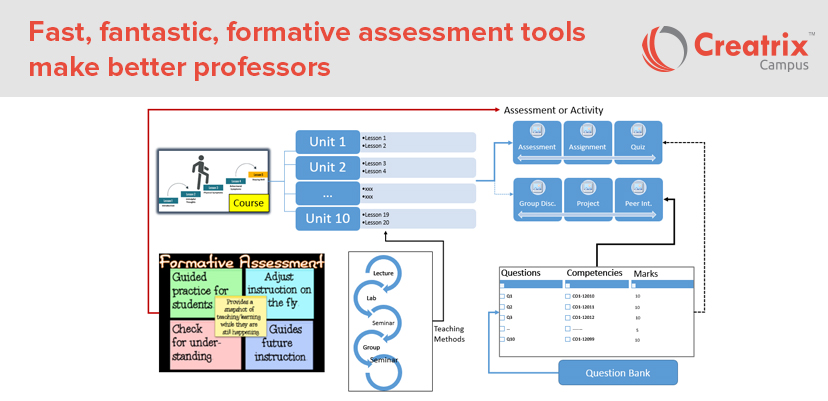Formative assessments are important to measure student’s performance and achievement of learning goals. It is getting increasingly difficult for educators to assess all the assignments, tests, quizzes, surveys, evaluations and other assessing activities. Normally it takes a longer time to teach and enable students to score higher grades in assessments. The adoption of new wave of technologies is accelerating, and nowhere is the trend so obvious than in colleges, universities and higher education institutions all over the world.
Tech trends shaking up traditional classrooms
With cloud computing and fast connection speeds, connecting students, faculty, staff, and administrators to access and store assessment data, and provide instant feedback will make a positive impact on teaching. Automated assessment tools enable professors to adopt innovative teaching methods, assessments and evaluations in every subject using the existing resources without involving any additional workload. Professors can adjust their teaching methods in different classroom situations, be it flipped, blended, virtual or traditional. Using higher education software, they can easily create interactive quizzes, surveys, questionnaires and polls using the best-in-class educational technologies to share with students in the classroom.
Educators can do a good job using a wide variety of web and mobile-based assessment tools to engage, motivate and inspire learners. Let’s look at some of them.
1. Online tests & assignments
Wouldn’t it be great if professors can build tests and exams with multiple-choice questions in a secure online environment? Take automated assessments from essays and assignments to quizzes and puzzles to instantly assess learners' progress.
2. Digital feedback loop
Learning today is a matter of melding conceptualization with practical demonstration, analysis with the application, and experience with theorization. Online faculty evaluation system through peer reviews on various aspects of teaching provide constant, formative feedback oriented to continuous teaching improvement and effectiveness.
3. Student response system
Educators can instantly connect with students as learning happens through student response system. They can create course evaluation forms to improve student learning, course, and programs and increase student self-reflection. Students can submit responses in real-time on mobile devices. Educators can gather students’ feedback and provide instructors and departments with useful data.
4. Problem-solving puzzles with gameplay
Educational institutions are providing a classroom environment using gamified learning to engage students, increase learner motivation and engagement, and stimulate critical thinking capabilities. Instead of simply teaching learners a theory or topic, inbuilt gamification can help learners improve their skills by testing and rehearsing real-world scenarios to apply knowledge.
5. Quick quizzes
As part of the teaching process, instructors can create a variety of interactive quizzes on the fly, as they can focus more on the content to assess the students. Some of the features offered to users include multiple-choice and true/false quizzes.
6. Online polls
Instructors can create and deliver interactive polls to share with students in the class. Online polls are easy-to-use and allow instructors to engage the audience in the class in real time. Create polls on a wide variety of subjects with unlimited responses and publish the results in seconds.
7. Surveys & questionnaire tools
Online surveys, e-voting and questionnaires are great ways to keep the students engaged most intellectually and get instant feedback. Professors can use online surveys and questionnaires to quickly assess students with an on-the-fly question bank database to get immediate insight into student understanding. Auto-populated results enable faculties to devise the best instructional strategy to drive learning effectively.
8. Chat & discussion boards
Online chat and discussion boards are powerful ways to do exit ticket activities. Students or groups can take notes, ask questions, and post videos, and instructors can check students’ knowledge and skills.
Faculty management software and online assessment tools discussed above can be used in a number of ways every day by professors and instructors. They have their own advantages, so educators can most effectively adopt the best formative assessment strategies as they can help them become better college professors!
Want to contribute?
We welcome thought leaders to share ideas and write for our blog.
Become a Guest Author →

